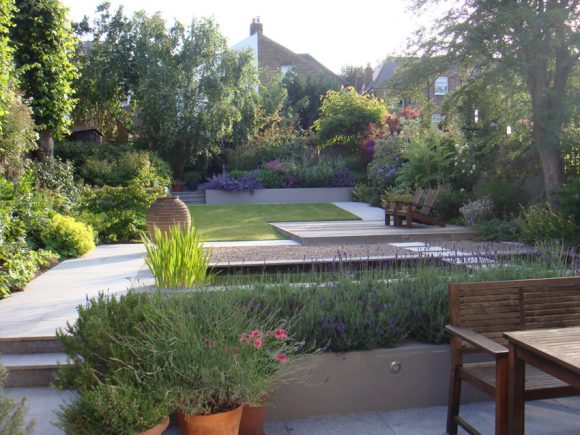Ten Top Plants for Amazing Autumn Colour
The warm fiery hues adopted by many deciduous trees and shrubs before shedding their leaves, coupled with the soft sunlight of this time of year, makes autumn a particularly evocative time. Even in the smallest garden I think it’s important to have one or more plants which provide good autumn colour.
So here’s ten of my favourite plants to light up the garden in fall:
Acer palmatum (Japanese maple) – there are hundreds of varieties of Japanese maples to choose from and most have impressive autumn tints. Their graceful forms make them ideally suited either as specimen focal points, or as a pleasing contrast when planted with other shrubs. The cultivar ‘Osakazuki’ is a particularly good choice, a small rounded tree whose rich green lobed leaves turn a brilliant scarlet red in autumn.
Amelanchier lamarckii (Snowy Mespilus) – a fantastic small tree ideal for a small garden. Trees may be either single or multi-stemmed. In spring, the bushy crown is covered in white blossom whilst in autumn the foliage turns fabulous shades of red and orange.
Betula pendula (Silver birch) – our graceful native birch tree with its weeping branch tips does not display any of the hot red autumn colours but instead turns a beautiful butter yellow, a perfect compliment to the peeling silver bark.
Berberis thunbergii (Japanese barberry) – a dense thorny shrub whose small green leaves turn red and orange in autumn. Small pale yellow flowers in spring develop into small red ovoid berries in autumn that harmonise beautifully with the foliage.
Cotinus ‘Grace’ (Smoke bush) – this large shrub is called the smoke bush in reference to the plumes of purplish pink summer flowers. But there’s no smoke without fire, and that comes in autumn when the large wine-purple leaves turn bright orange and scarlet.
Euonymus alatus (Winged spindle tree) – for most of the year this dense spreading shrub acts solely as a green backdrop to other plants. But come autumn it takes centre stage when the leaves turn spectacular shades from deep pink through to brilliant crimson. At the same time, the reddish-purple fruits open partially to reveal orange seeds. Quite a show!
Liquidambar styraciflua (Sweet gum) – a tall conical tree only suitable for larger gardens and sometimes seen as a street tree. The maple-like leaves turn through a range of colours from pale orange to deep red-purple.
Nyssa sylvatica (American tupelo) – a medium-sized tree with an upright conical habit, the leaves change to stunning shades of red, gold and yellow in autumn.
Rhus typhina (Stags horn sumac) – a beautiful low crowned tree, usually wider than it is tall. The attractive divided leaves change through shades of yellow, orange, red and purple in autumn, coupled with upright furry crimson fruit that last well into winter.
Sorbus ‘Joseph Rock’ (Rowan) – a small upright tree that makes a valuable addition to any garden. The white blossom in early summer is a favourite with bees, whilst in autumn the pinnate leaves turn impressive shades of red, purple and orange. The large clusters of creamy-yellow berries turn orange-yellow when ripe, lasting well into winter, before providing a welcome winter meal for birds.
Autumn’s not only a great time to see these trees and shrubs in their full glory; it’s also a great time to plant them, either as bare root or container-grown plants in pots. So strike now while the iron’s hot!



